In the previous sequel of my travel stories on Crete I started to talk about the visit to Knossos Palace. This is the largest Bronze Age archaeological site on the island. With its position in the eastern part of the Mediterranean Sea, Crete constituted in way a bridge that connected nations and cultures from three continents, Europe, Asia and Africa, and thus over time an autochthonous ancient Greek culture started to develop here. It is called the Minoan culture/civilisation after the legendary King Minos.
Still, things need to be put in a perspective. The Minoan culture lasted from around 3200 BCE to around 1100 BCE and it is considered the first advanced civilisation in Europe. After this culture, the civilisational centre moved to mainland Greece and Mycenae, and from there, significantly later, via ancient Rome, further towards Europe. Crete is located some 400 km from Mycenae and Athens. But, in the opposite direction, towards the southeast, around 800 km away, there is Egypt, Cairo, as well as Giza. What I want to say is that this is all fine and nice as regards the Minoan culture and I truly enjoyed what I saw here, but this all pales in comparison to what the first neighbours to the south used to do. The first palace in Knossos was built around 1900 BCE, while the Great Pyramid of Khufu was built 6 centuries earlier! The Minoan culture started to deteriorate already around 1400 BCE and 50 years later, the craftsmen of Egypt produced the unsurpassable mask for their young pharaoh Tutankhamun, while some 150 years later Ramesses II had Abu Simbel built!
I must emphasise that this comparison to Ancient Egypt did not in any way diminish the level of my enjoyment in the remains of the Minoan civilisation, but since Europeans are generally speaking prone to overdoing it with their self-promotion, I think that things need to be put into perspective and then enjoyed for their own separate merit.
And so, I can say that the Palace in Knossos is very complex and with myriad of rooms or rather their remains. This makes the visit a little challenging, especially if the visitor goes on their own, in other words, without a guide, as was the case with me. Still, I have no regrets. When I do the sightseeing on my own, I often don’t get all the information the guides may have, but at least I can see everything I’m interested in at my own pace and within the timeframe I set for myself.
Having first dealt with the access to the Palace and its surroundings, now I concentrated on the Palace itself or rather on the section called the South Propylaeum.
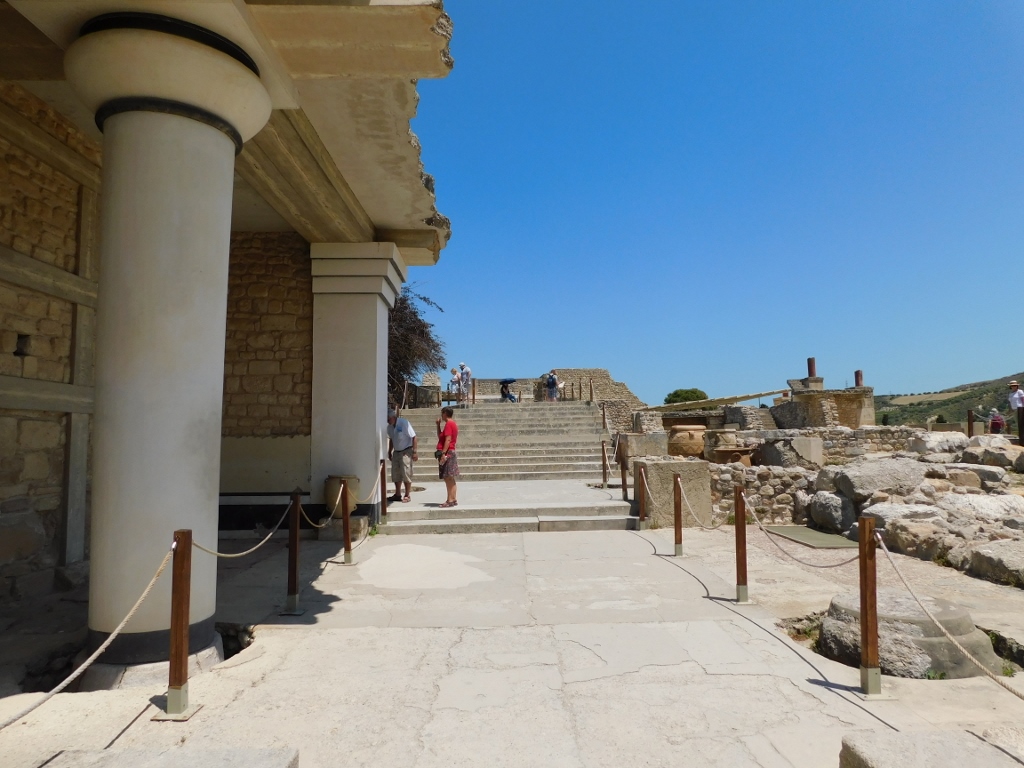 South Propylaeum
South Propylaeum
What can be seen here today is, of course, a reconstructed and restored section (this was done during Evans’s research). Propylaeum (or often in plural, propylaea) was a term in the ancient Greek architecture that was used for a monumental gateway or better said – a porch, certainly a monumental one. Namely, this element separated the secular and the religious parts of a settlement and it was necessary to use such an imposing access in order to accentuate even more the importance of the building that was being entered. This concrete part here was not used for entering a temple, but the name was still attributed on account of the monumentality of the south access to the Palace.
When you follow the path beside the reconstructed section of the South Propylaeum, you can see nicely a reconstructed fresco the fragments of which were found in this part of site. A copy of the fresco was placed here after the idea of Evans himself. This is the fresco called “Cup-Bearer” depicting a young man carrying a rhyton, a vessel used for storing liquid required for ritual purposes.
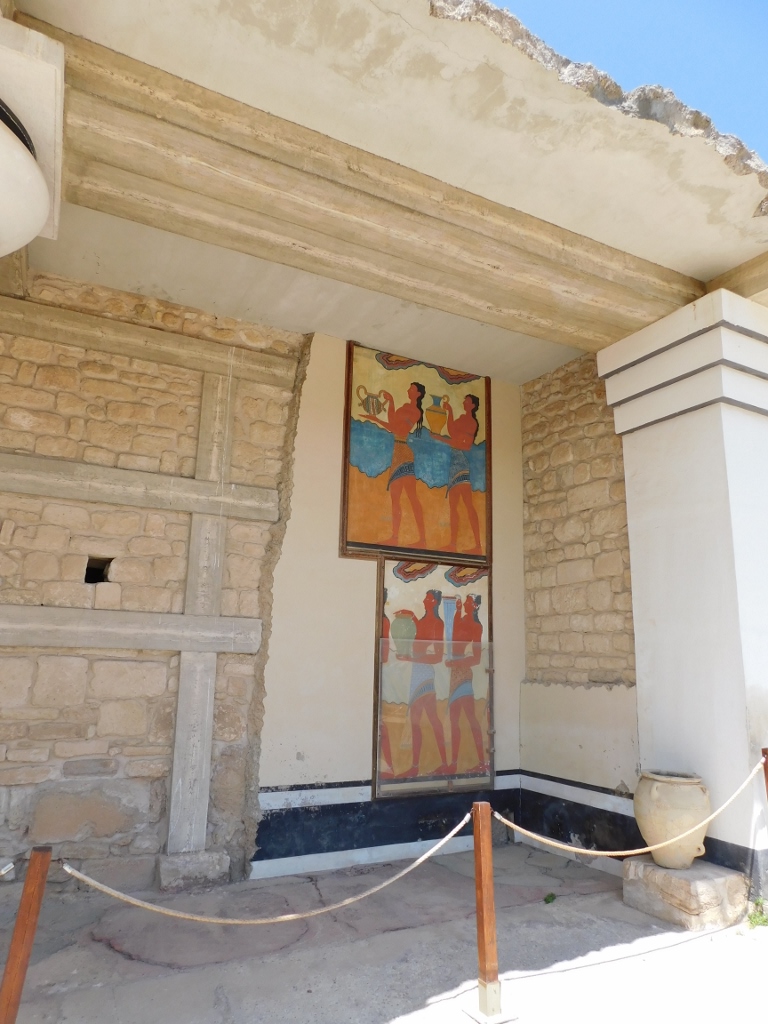 South Propylaeum, a detail
South Propylaeum, a detail
The original is exhibited at the Heraklion Archaeological Museum. And only after you go to the museum, as I did later on, you realise what exactly was found here in the first place. The fresco that can be seen here is only an imagined reconstruction of the segments of the “Procession” fresco, including the figure of the “Cup-Bearer,” on the basis of the practically very small quantity of surviving elements. Moreover, the figure of the “Cup-Bearer” (in the photo above, the figure to the right in the lower section) is the only figure from a Minoan fresco in the life-size the head and torso of which have been preserved. Still, the fact that the original colours survived even after more than 3000 years is impressive enough by itself.
South of the reconstructed South Propylaeum, the visitor can also see numerous restored pithoi, large vessels for keeping food, from the period 1450-1100 BCE, which shows that at its final stage this part of the Palace was used for storing.
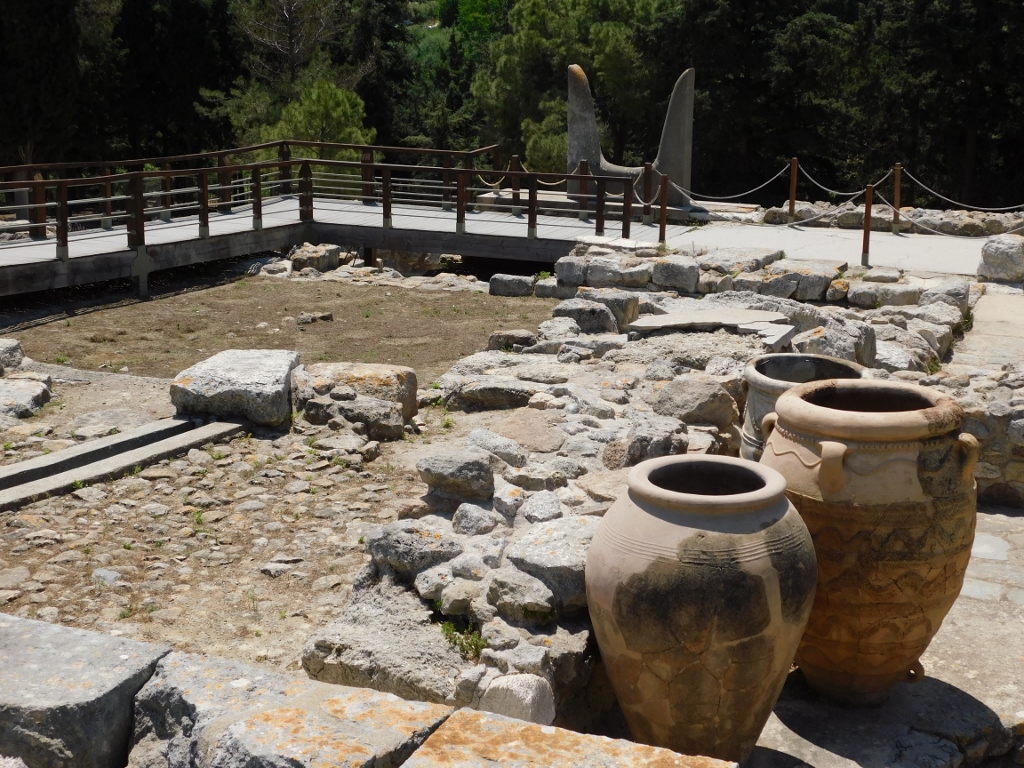 Area east of the South Propylaeum and the pithoi
Area east of the South Propylaeum and the pithoi
In the background of the previous photo it is also possible to see the reconstructed “Horns of Consecration,” which is a term that Evans came up with. Namely, the entire Minoan civilisation was linked to bulls. Zeus was disguised precisely as a bull in order to seduce and abduct the Phoenician princess Europa whom he then took over to Crete where among other children she also bore Minos, the king of Crete, who rendered the name to this civilisation. Then there is also Minotaur, part human part bull, born by the wife of King Minos who cheated on her husband with – the Cretan Bull. So, the symbolism of the bull was ubiquitously spread throughout the entire Minoan civilisation and these reconstructed Horns of Consecration are just a reminder of the fact. The form of the horns stylised in this way can be seen in several frescoes, as well as in the shape of objects made of different materials that can be found in museums.
Directly on from the South Propylaeum, on the right-hand side, the visitor can see the south part of the Central Court while in-between there are remains of a myriad of rooms. As I’ve said in the previous sequel of my travel story – a proper labyrinth!
 Knossos Palace, a detail
Knossos Palace, a detail
Across the visitors’ path, on the left-hand side, there are the West Magazines. There, under a large canopy that has been installed in order to protect these sections from the atmospheric influence, one can see long and narrow storing rooms that cover an area of as much as 1300 sq. m. In the floors of these rooms there are excavated sections in which different equipment and vases were kept. Remains of numerous pithoi have been found in the warehouse, some 150 of them, and that only goes to show how wealthy the Palace was. Although no remains of the contents kept in these large vessels have been found, it is presumed that they were used for the storing of oil, wine, pulses, etc.
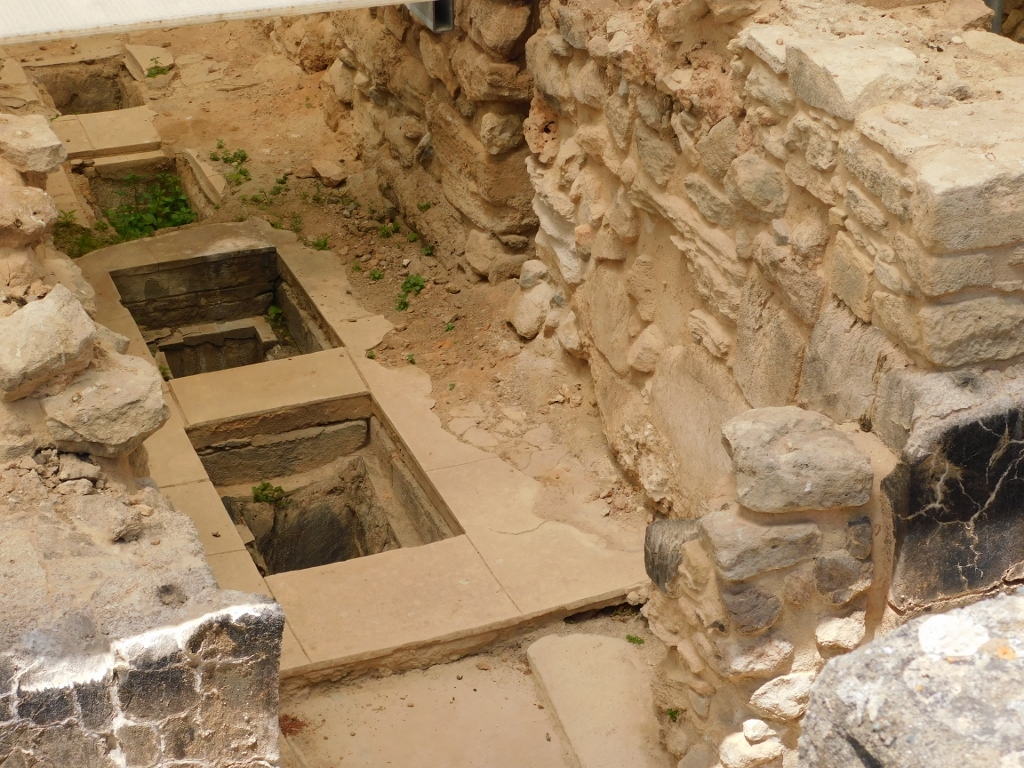 West Magazines, a detail
West Magazines, a detail
When you continue with the sightseeing of the West Wing (west of the Central Court), you get to a currently paved area where you can see remains of walls and columns, as well as several reconstructed rooms.
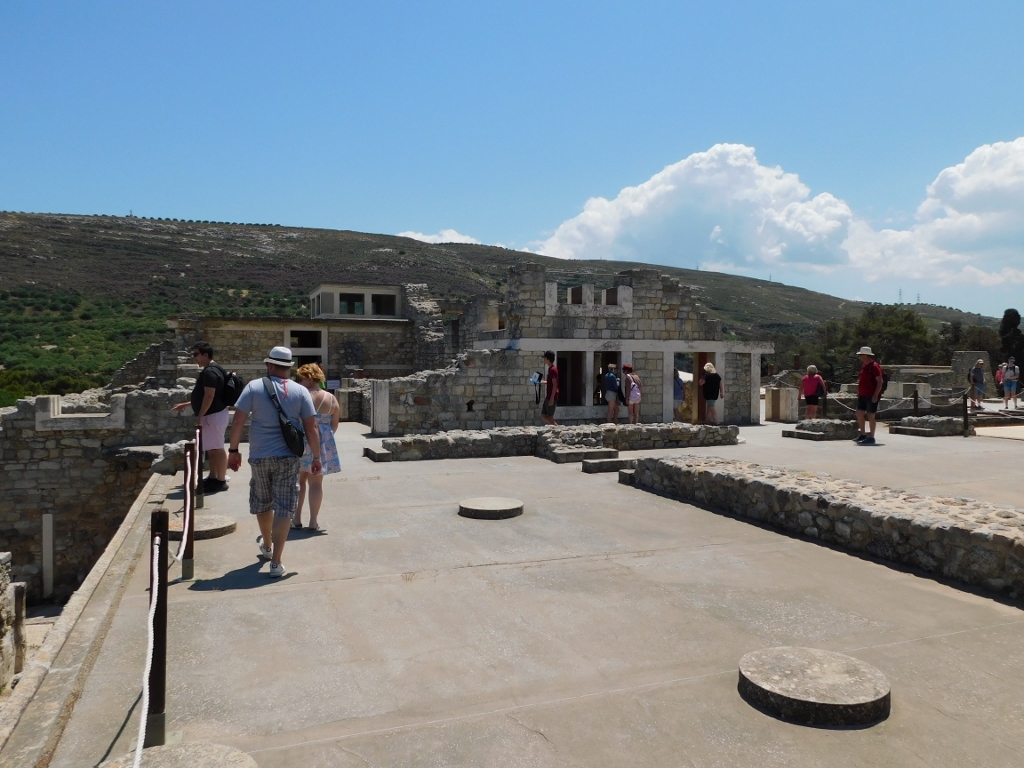 West Wing, a detail
West Wing, a detail
Before getting to these rooms, I first looked at the remains of the palace that lie over the slope north of the place that I had reached which I visited a little later. There one can discern reconstructed building called the North Lustral Basin (in the photo up and in the middle) and the West Bastion that can also be seen in the photo from the back (up and to the right).
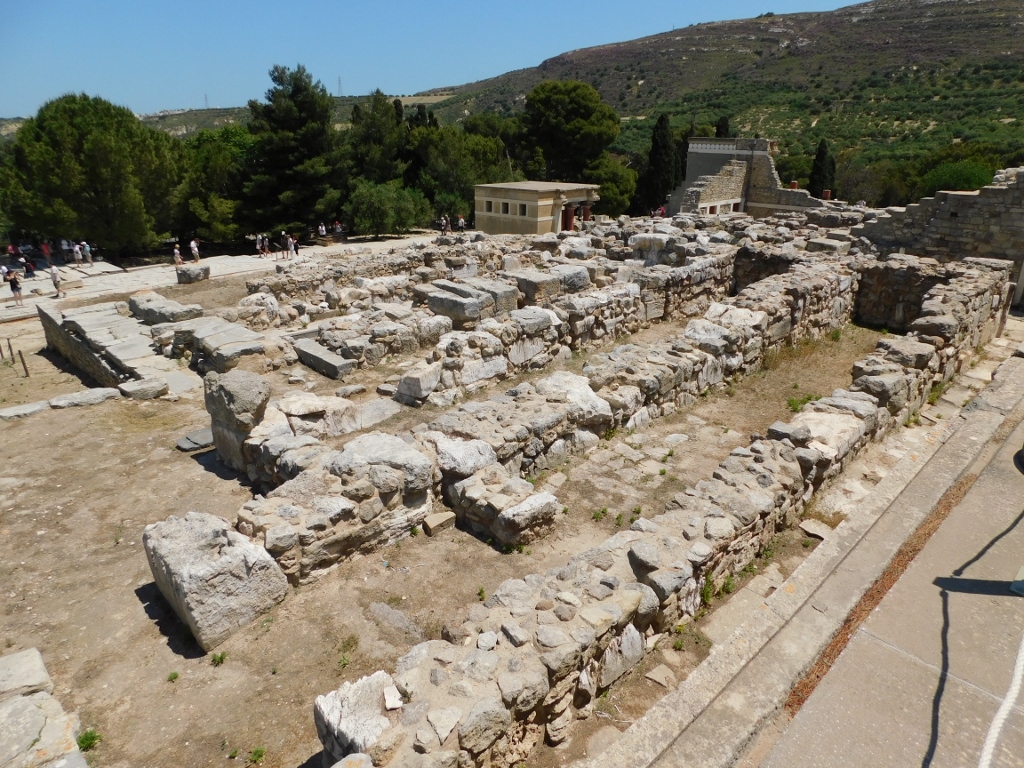 Knossos Palace, a detail
Knossos Palace, a detail
To start with, I went to the rooms that had been reconstructed on the top of the West Wing. There you can see copies of some Minoan frescoes (but only from the doorstep, since it was not possible to enter). On the left wall there is a copy of the “Ladies in Blue” fresco. One of the most famous frescoes from the Palace is the “Bull Leaping” fresco, the copy of which can be seen on the opposite wall in the next photo.
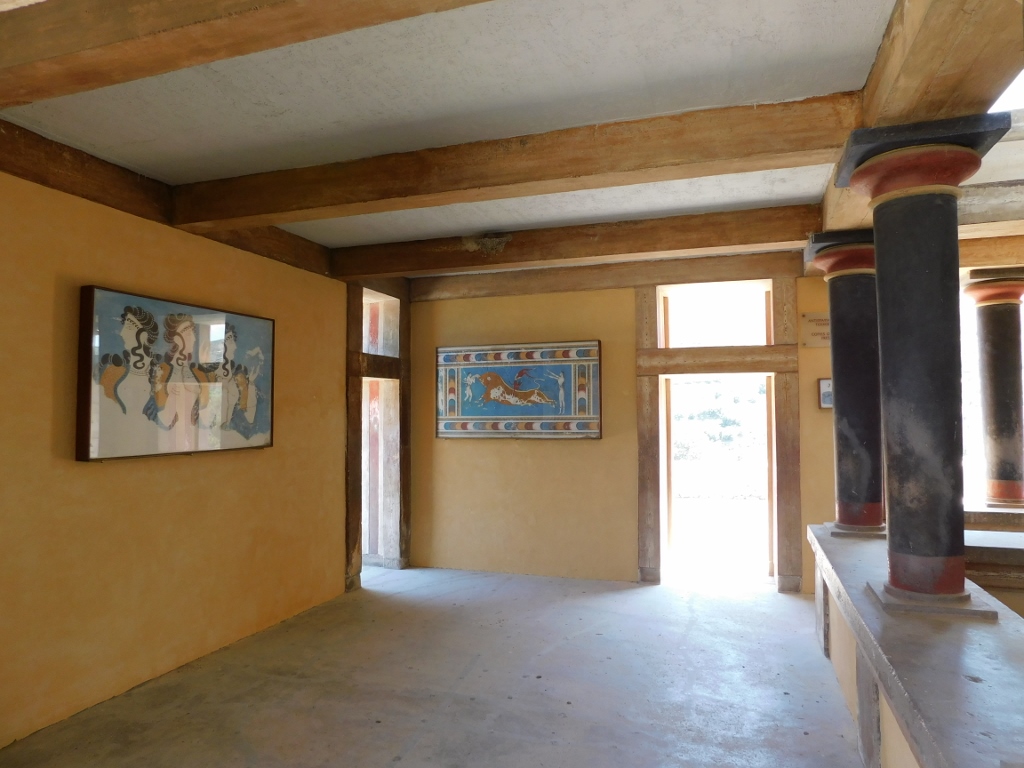 Hall of the Fresco Copies, a detail
Hall of the Fresco Copies, a detail
The original is exhibited at the Heraklion Archaeological Museum and this is the most completely restored fresco that depicts the scene of leaping over a bull. This is not a unique depiction of the bull leaping scene, although it is not fully certain if this really used to be practice on Crete or not. Still, it is believed that this may have been either a type of a Minoan sport competition or some kind of a rite of passage.
Directly under this reconstructed hall there is the “Throne Room” and now I went there. Still, before dealing with this room, I took a photo of a detail from the Hall of the Fresco Copies.
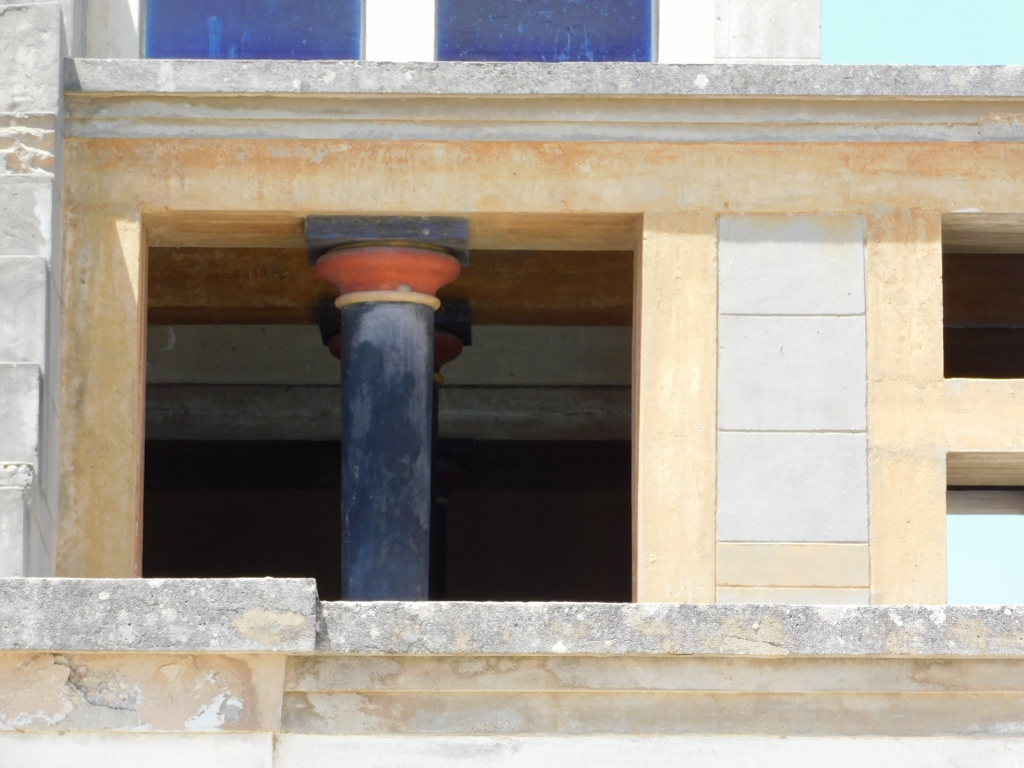 Hall of the Fresco Copies, a detail
Hall of the Fresco Copies, a detail
Both this detail and its context may be seen much better in the following photo that shows the entrance into the Throne Room.
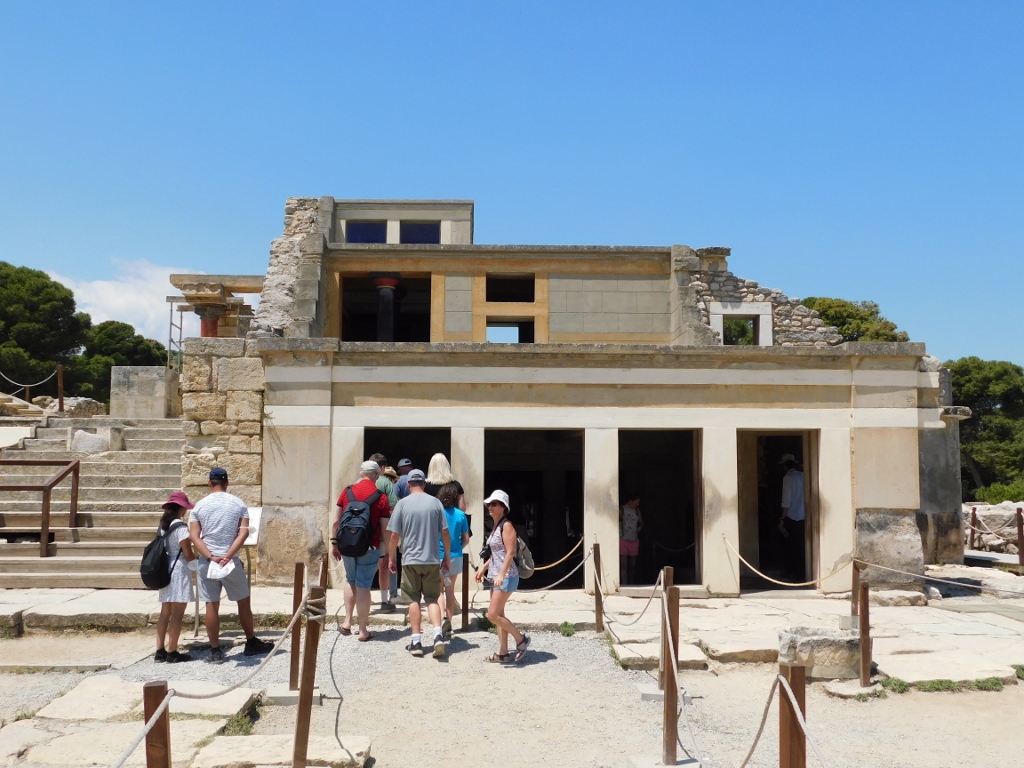 Entrance to the Throne Room; the Hall of the Fresco Copies is above
Entrance to the Throne Room; the Hall of the Fresco Copies is above
In order to access the room here, it is necessary to stand in line that leads first to an antechamber and from there one can have a good look at the main room. The name was, again, given by Arthur Evans who conducted excavations here at the beginning of the 21st century. The reason is that there is a chair made of rock here, which reminded Evans of a throne.
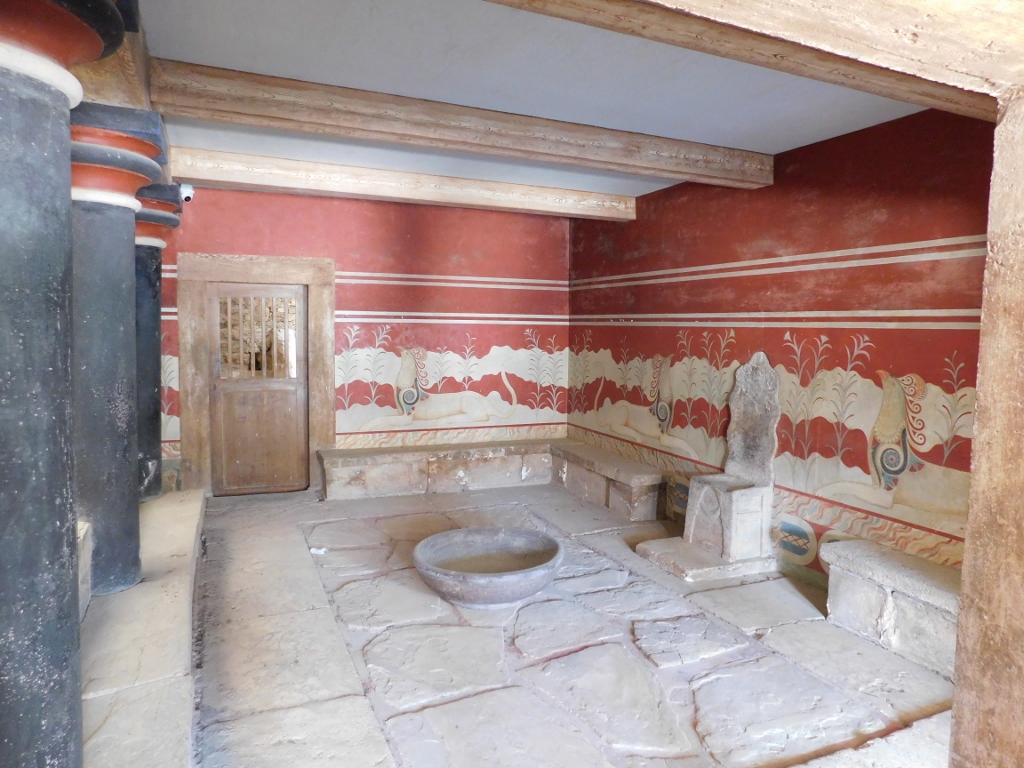 Throne Room; the rock chair is fixed to the wall on the right-hand side between two rock benches
Throne Room; the rock chair is fixed to the wall on the right-hand side between two rock benches
On the walls, there are (copies) of frescoes that depict floral motifs and griffins, mythological beings with the body of a lion and the head of a bird. The rock basin that is seen in front of the throne was found in the adjacent hallway, but was moved in here. In the back wall there is a passage that leads to a couple of smaller rooms.
On the left-hand side, there is a section separated by a lower partition wall and pillars, and since the floor of this area is lower in relation to the floor of the entire room Evans concluded that this was a pool used for purification rites, which led him to name such places (there are several of them at the site) – lustral basins.
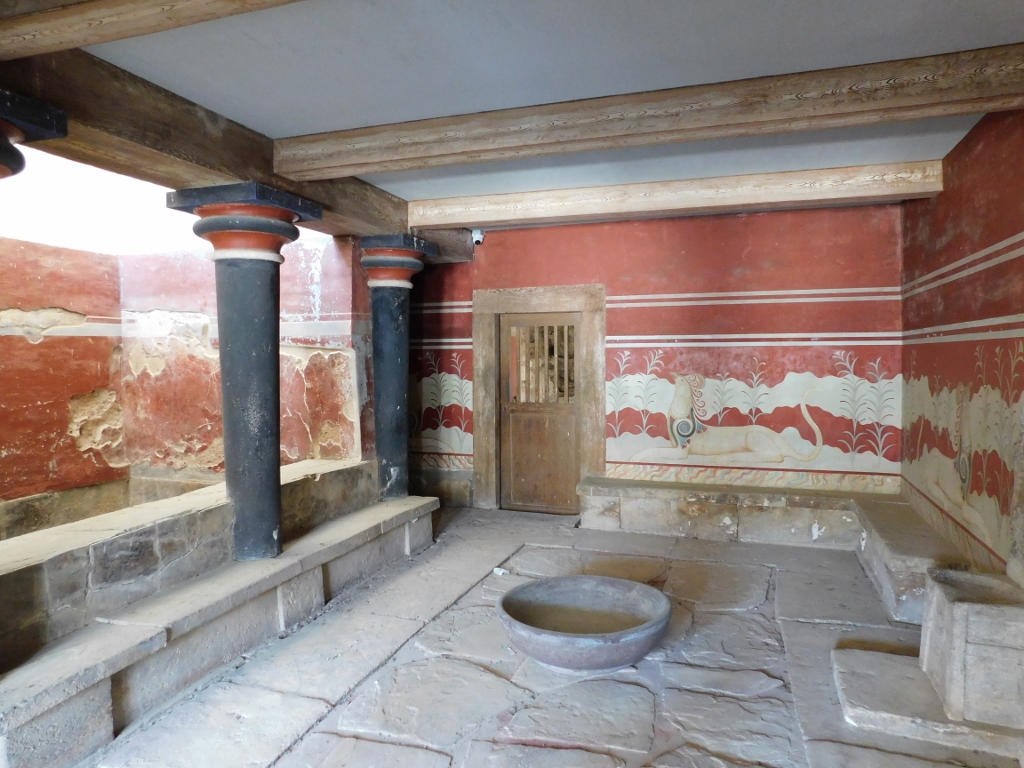 Throne Room
Throne Room
Still, the actual function of this room is not clear. Evans believed that this whole area was used for religious rites and that it would be the king of Knossos who would head such ceremonies. On the other hand, this is not the only “throne” that was found in Knossos and taking into account the modest nature of the room it is quite unlikely that this was indeed a “throne room.”
Having left the Throne Room, I dealt again with the north section of the Palace and then I decided to go to the building called the “North Lustral Basin” that can be seen on the left-hand side of the next photo.
 Knossos Palace, a detail
Knossos Palace, a detail
What can be seen here nowadays is practically a reconstruction envisaged by Evans himself.
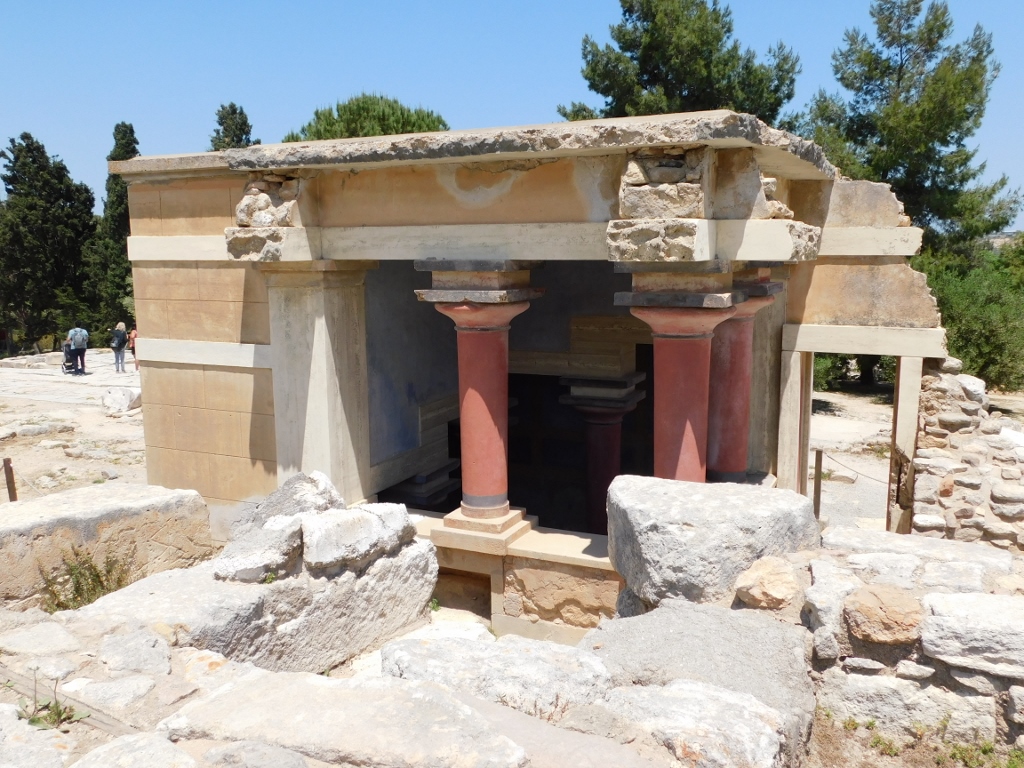 North Lustral Basin
North Lustral Basin
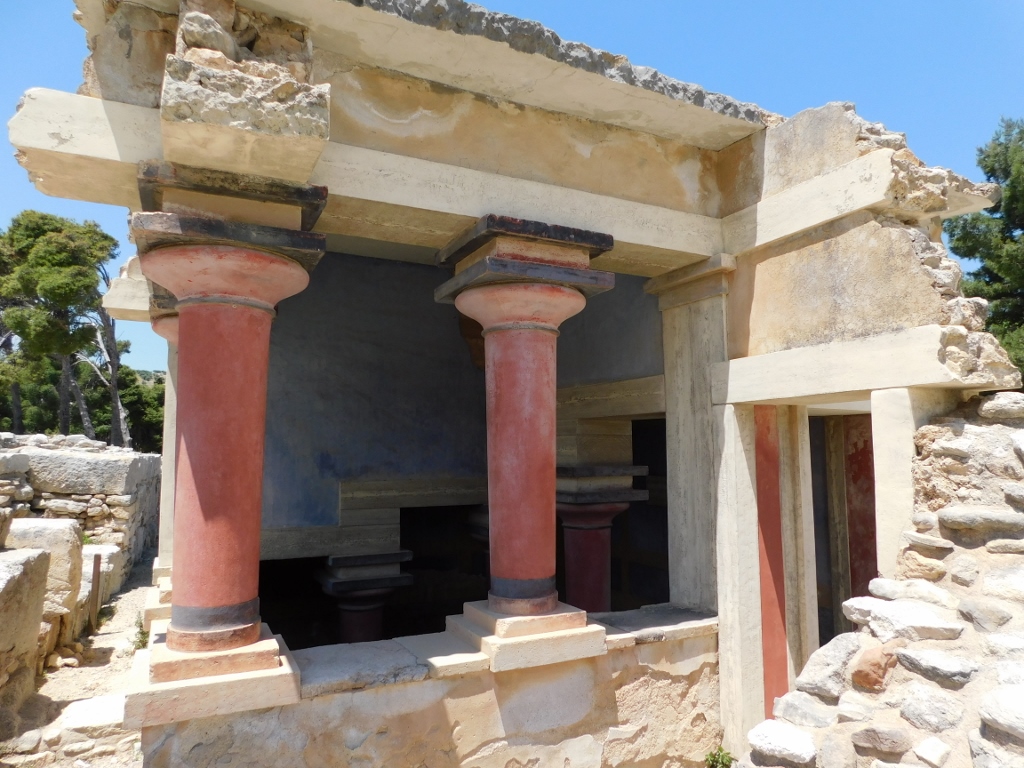 North Lustral Basin
North Lustral Basin
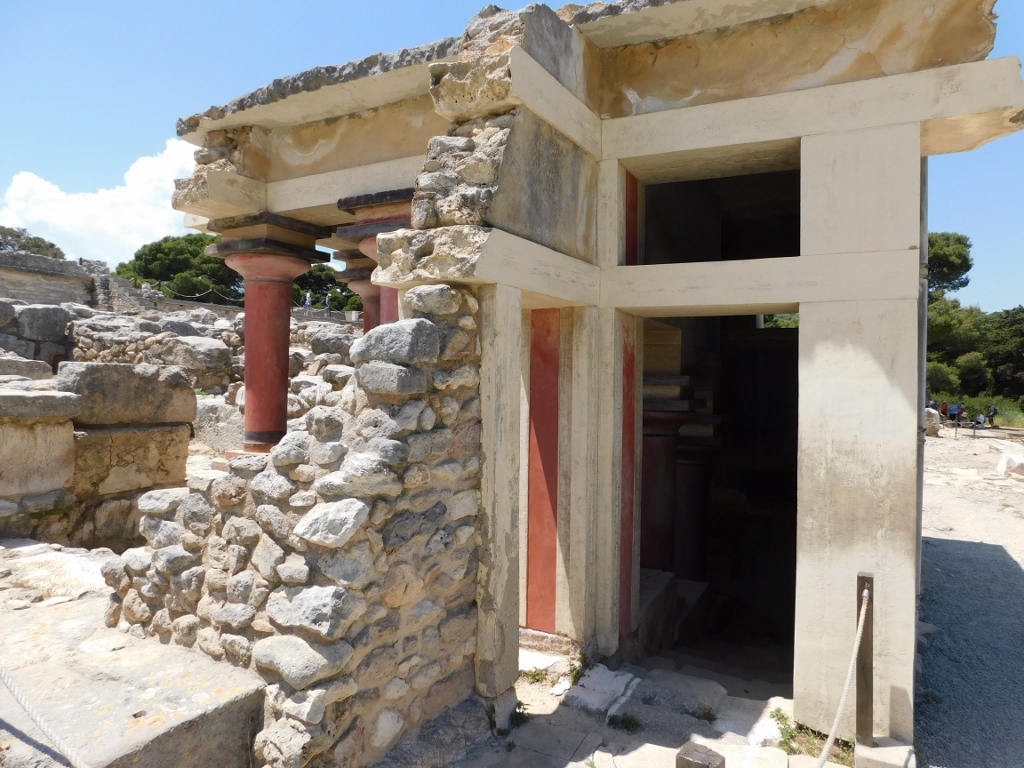 North Lustral Basin
North Lustral Basin
This main area looks like a cistern, since its floor is lower in comparison to the surrounding sections and it is reached by steps (when it is permitted to go there).
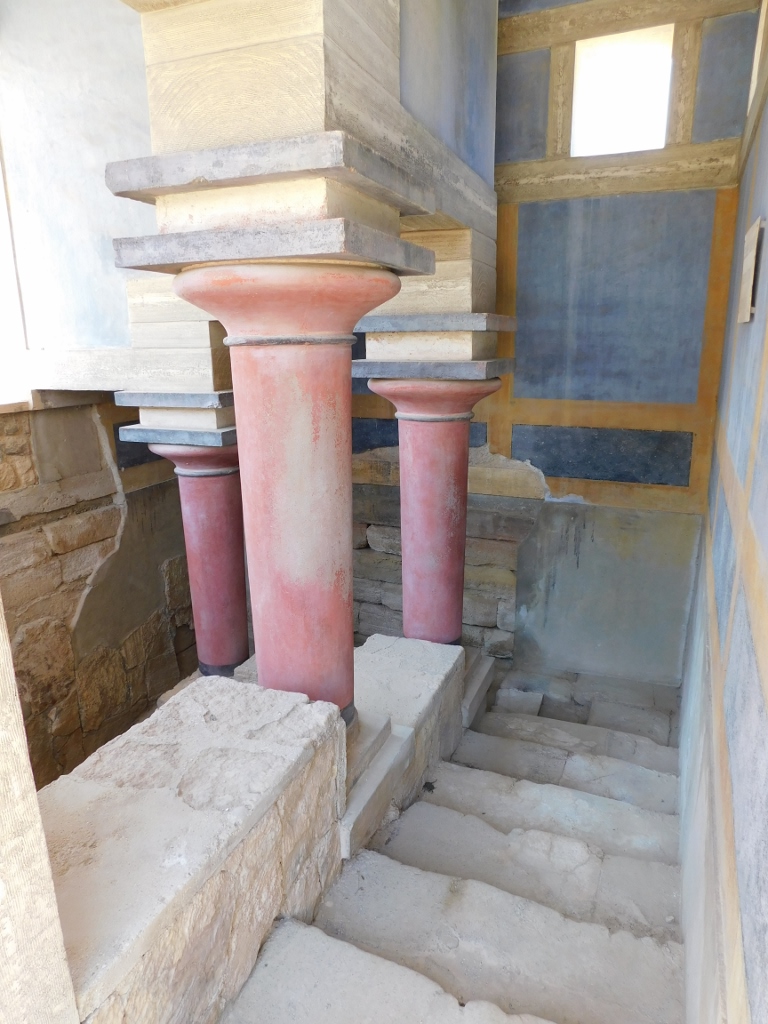 North Lustral Basin
North Lustral Basin
Such structures may be found not only in Knossos, but also within other palaces and important buildings that belong to the Minoan civilisation and were built in the period from 1700 to 1450 BCE. Still, regardless of the opinion of Arthur Evans, it is believed that these structures were never used as basins for rites, for there is neither supply nor discharge of water provided, while the Minoan civilisation used these construction elements quite well and successfully.
Although I was quite close to one of the most frequently photographed buildings within the Palace – partially reconstructed and elevated West Bastion located close to the North Entrance into the Palace in Knossos, I decided to visit this part of the site a little later. For the time being I just took a photo of it “from the back.”
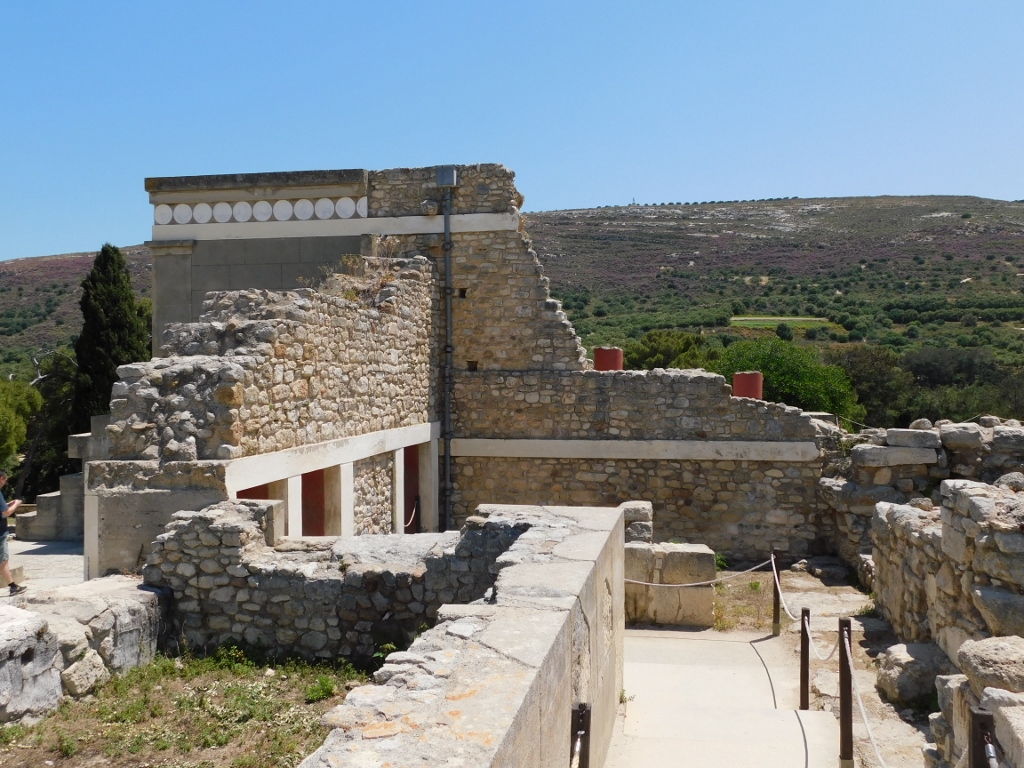 West Bastion, its back side
West Bastion, its back side
From here I could see nicely the entrance to the Throne Room and the Hall of the Fresco Copies, as well as numerous remains of other, nameless buildings and rooms.
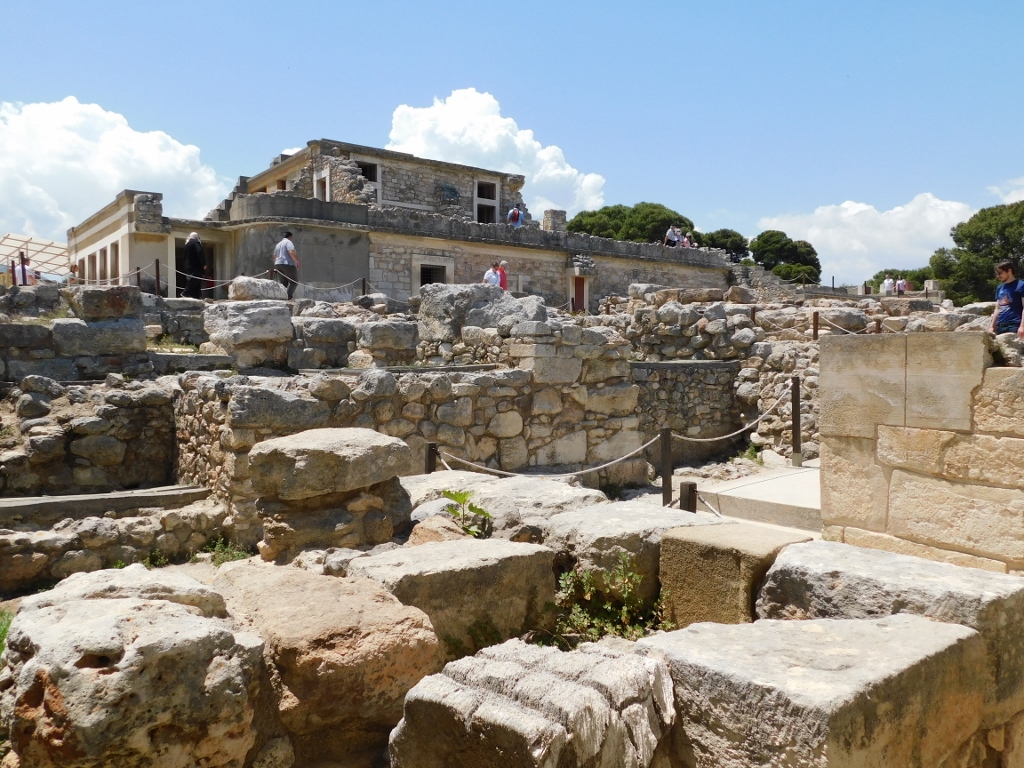 Knossos Palace, a detail
Knossos Palace, a detail
Now I went to the rectangular Central Court, the central part of the Palace, around which there are different palace wings, but it could also be directly accessed from the parts of the settlement outside the palace. The Central Court in Knossos is around 50 m long and around 25 m wide, and it represents an architectural element that is typical of all Minoan palaces. It is presumed that this space was used for meetings and rituals.
 Central Court, view at the West Wing
Central Court, view at the West Wing
As for the West Wing, the sections of which I had already partially visited, it encompasses numerous storage rooms, shrines and the Throne Room. Thus, from the Central Court it is possible to see some interesting parts of the buildings and details that are located on the west side of the court.
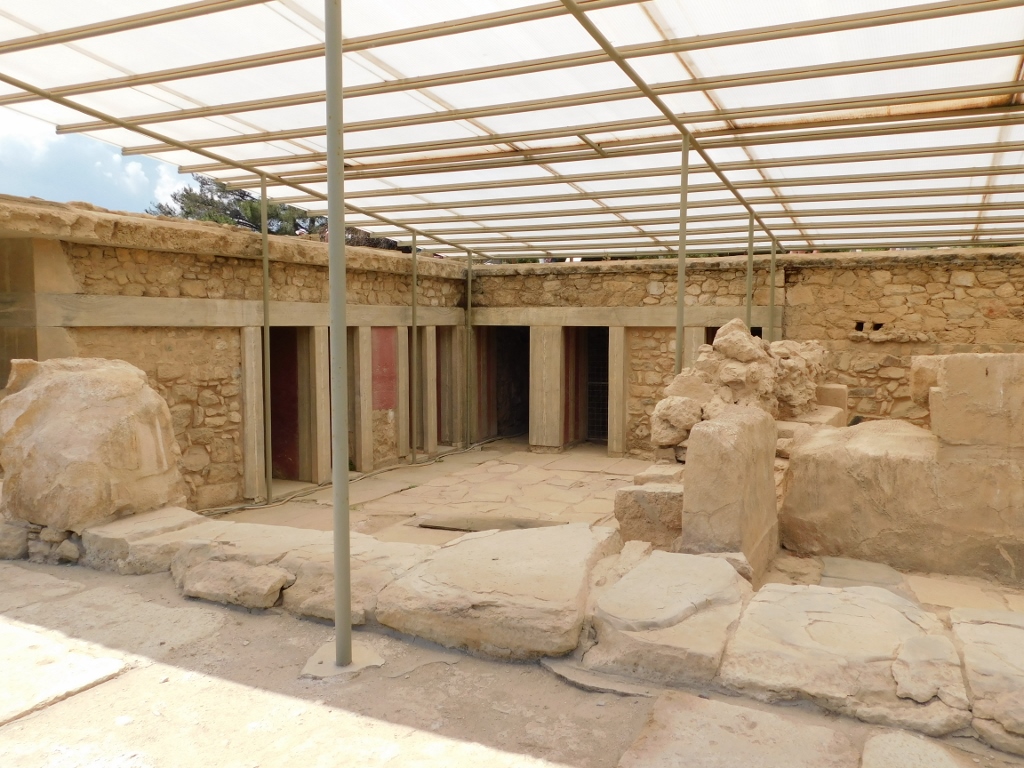 West Wing, a detail
West Wing, a detail
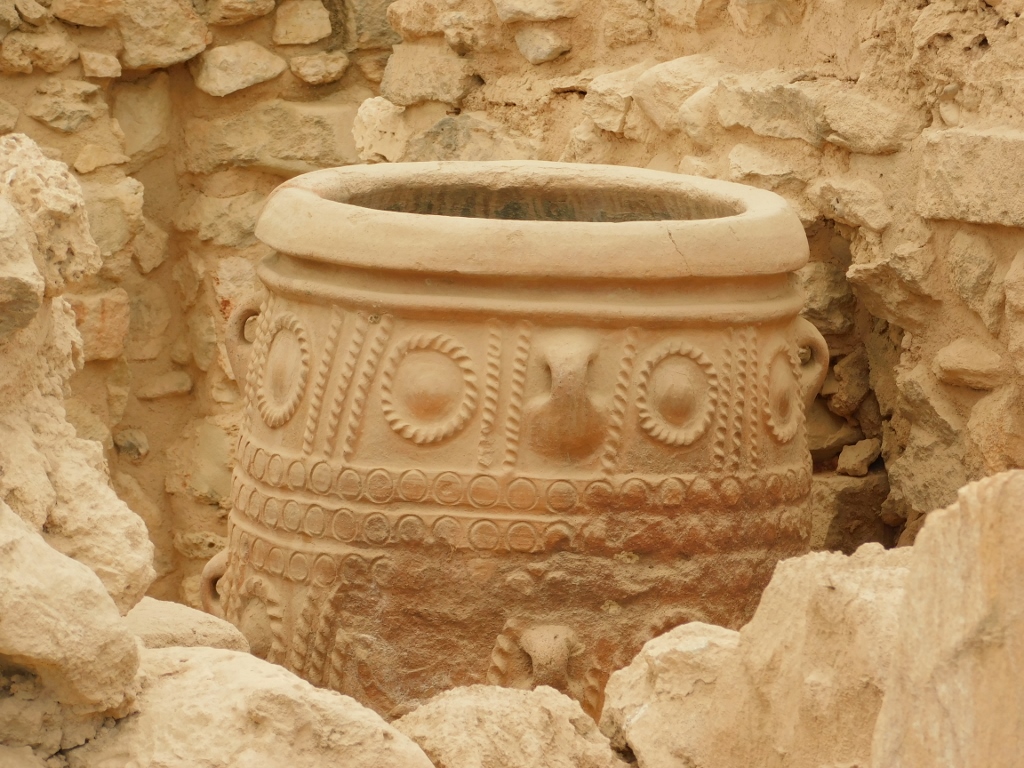 West Wing, a detail
West Wing, a detail
On the south side of the court there is a covered passage on the wall of which one can see a copy of the “Prince of the Lilies” fresco.
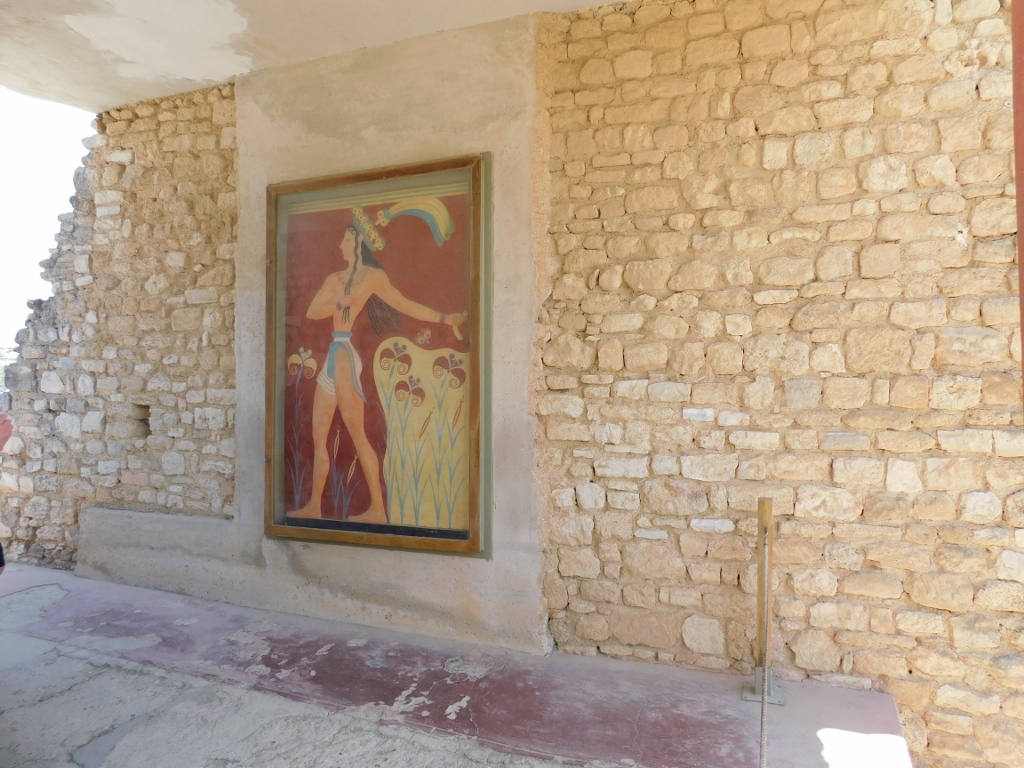 Prince of the Lilies fresco
Prince of the Lilies fresco
Like most of the other frescoes, this one too has been mostly reconstructed using the imagination of the researchers, for a very small number of fragments were in fact found (some of them show jewellery in the shape of lilies and hence the name of the fresco) and to this very day there are different theories about the real look of the figure and even about its gender. The original is exhibited at the Heraklion Archaeological Museum and this is in fact not a classic fresco, but rather a relief fresco dated back to around 1550 BCE.
From this direction I also had a lovely view at the South Propylaeum with the fresco copy that I have already talked about.
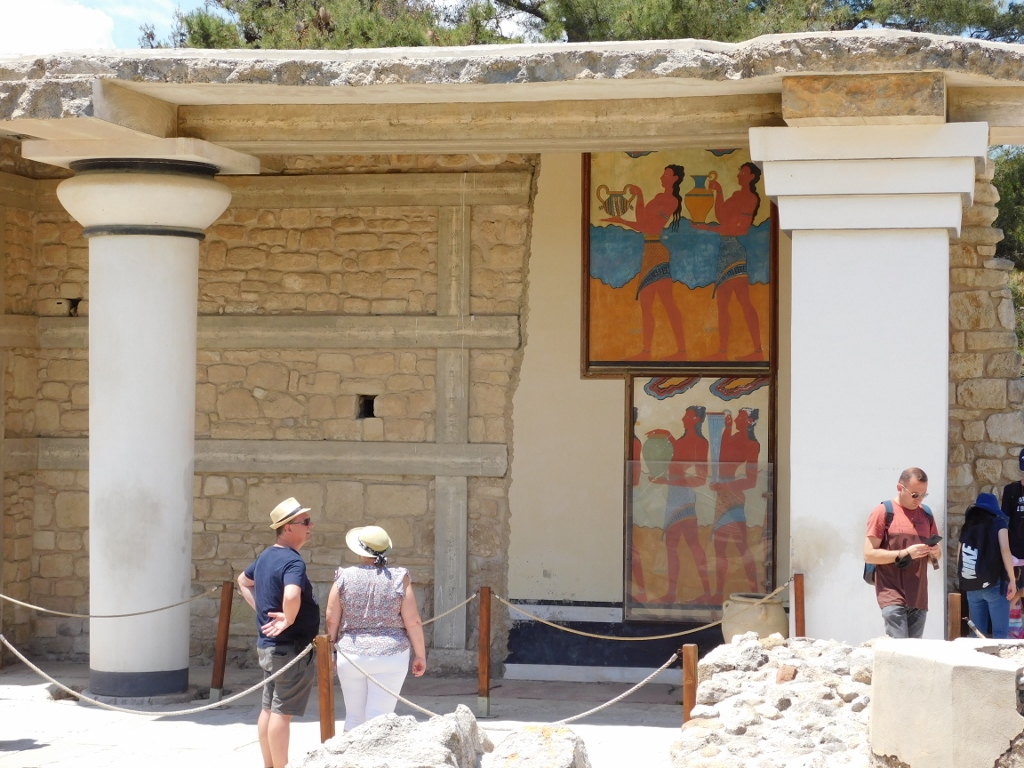 South Propylaeum
South Propylaeum
It was also interesting to note the area between the place where the Prince of the Lilies is and the South Propylaeum. You can see quite nicely a reconstructed runoff canal. The palace had at least three separate systems for water management: one for water-supply, another one for the drainage of runoff water and the third one for the drainage of waste water.
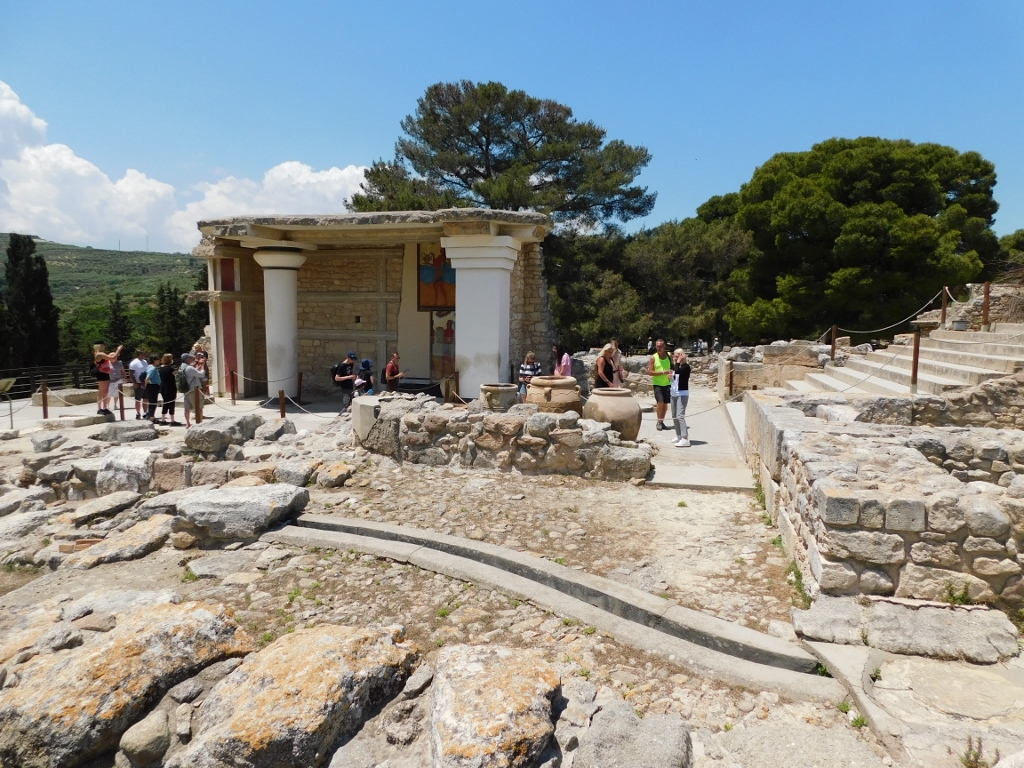 Knossos Palace, a detail
Knossos Palace, a detail
After this I went to the East Wing of Knossos Palace.